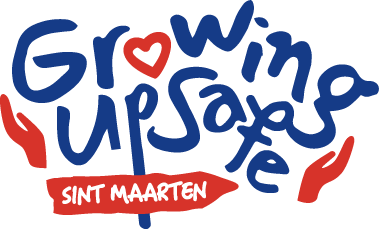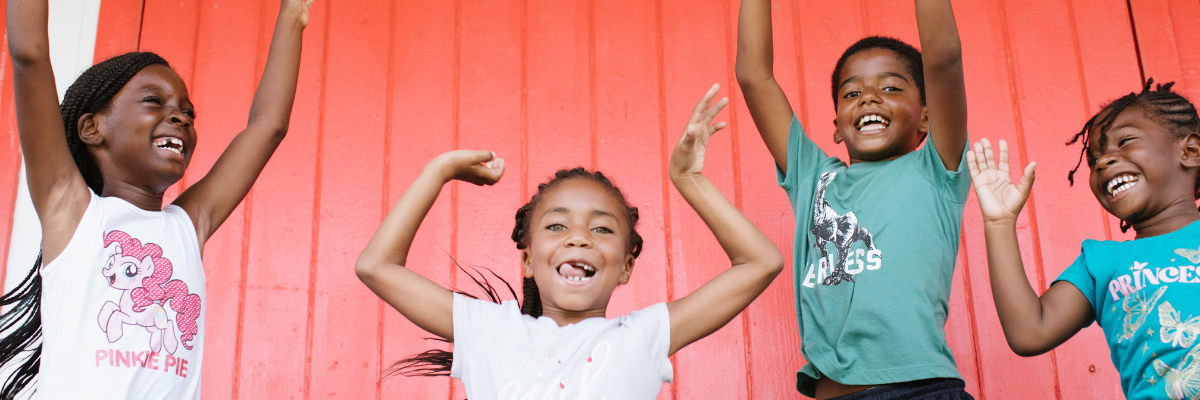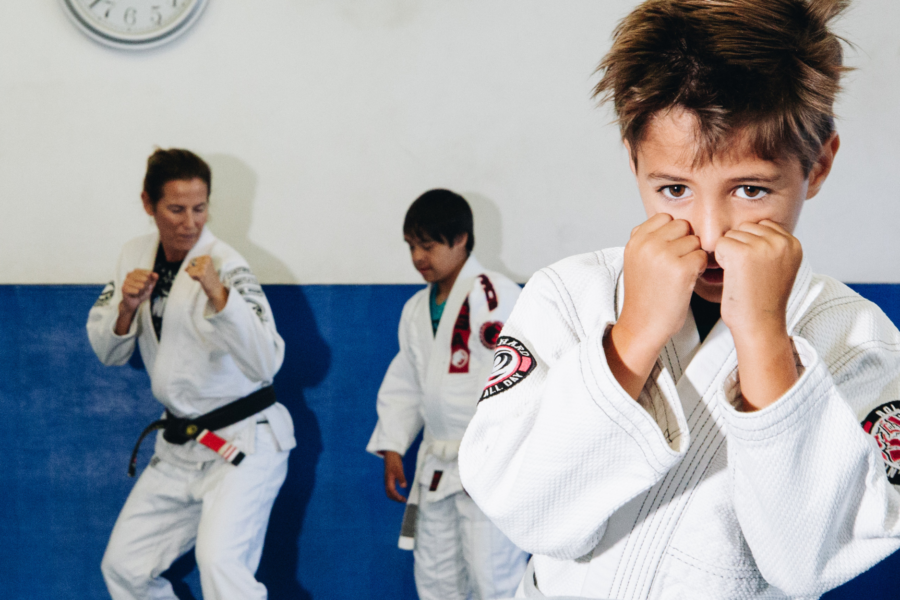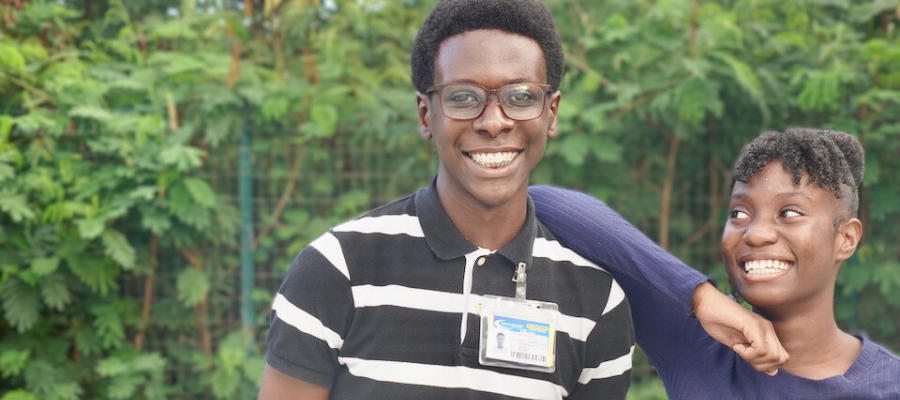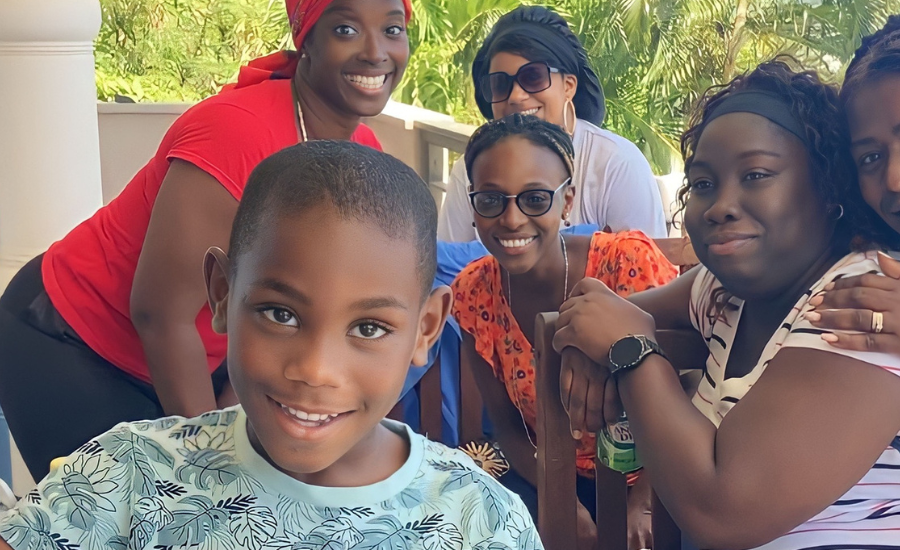Stichting EGO was founded in 2003 and is focused on education and youth development. Its most visible program is operating afternoon school programs. The foundation emphasizes learning through play and the emotional development of children.

Audrey Wilson has been working in the student care and educational sector for more than twenty years. During those years, she experienced first-hand how technology can create both positive change and new challenges: “A positive is that children have access to more information and can use their devices for research; a negative is cyber-bullying, of which I have noticed a rise.
We cannot protect our children from all negative experiences, including those online. However, we can teach them how to handle and to cope with them and move on positively.”
Audrey is a Student Care Coordinator who is also a certified trainer for the Partnership for Children programs on Sint Maarten, facilitated by Ervaringsgericht Onderwijs (Stichting EGO). These programs, which include ‘Zippy’s Friends’, ‘Apple’s Friends’, ‘Passport’, and ‘Spark Resilience’, are designed to help children aged 5 to 13 develop positive problem-solving strategies. They achieve this through a combination of storytelling, discussion, games, role-play, and drawing.

“The programs’ modules cover a wide range of topics, including how to make friends, handle bullying, and cope with loss. In the programs for older children, they are prepared for the transition to secondary school, handling a new environment, and the emotions that might arise as a result of this change,” Audrey explains.
She adds: “Thirty years ago, there was very little, if any, focus on social-emotional learning for children in the classroom. Schools taught their students math and language. However, teaching children how to socialise, identify emotions, and develop positive coping skills has become increasingly prevalent in schools. This is very important for their development and might even become more important as children and adults spend more time behind screens.”
What is social-emotional learning?
Social-emotional learning considers the environments in which a child might find themselves – and teaches them how to best cope with people and situations they might encounter. The basics start with teaching children about emotions, identifying them, naming them, etc. The students also learn how to reflect on their feelings and how they react in certain situations.
Once children learn to understand their emotions and how to cope with anger, sadness, loss, and disappointment, they can more easily process things, be calm, and stay focused. This also results in better behaviour at school and in their academics.
Can you give an example of utilizing social-emotional learning in the classroom?
When I first moved to Sint Maarten several years ago and started working at Sister Regina School, I had to stand in for a teacher who was running late. I walked into the classroom, and one of the students, a little girl, was very upset and crying. I tried talking to her, but nothing helped. So, I asked her classmates: “Does anyone know how I can help her?” Another young student said: “You can check the apple tree!”
In the back of the classroom, I saw a paper-crafted apple tree. On several paper apples, students wrote their names and what made them happy; on the back, they wrote down what helped them if they were sad or feeling unwell. I read what that little girl needed, and it indeed helped her. It was an excellent way to teach children how to express their needs.
Is bullying and cyberbullying also discussed in the Social Emotional Learning program?
All the programs discuss bullying. Like all the other modules, the focus is on how children can cope with bullying or cyberbullying. The reasons behind why people bully others are complicated, and the reality is that bullying will always exist. What we can do is give children the tools to recognise bullying, react to prevent it from continuing, and process their bad experiences.
For example, for young children, we teach them, when being bullied, how to express that they don’t like the bullying behaviour, to put it in words and use a gesture: “Stop, I don’t like that!” and they can raise their palm indicating ‘stop’. If it does not stop, the second step is to look around them for help. If that is not enough, they are instructed to tell an adult. However, this is the hardest step for them to take… they learn it, they know what to do, but how to use it, is often difficult for them.

Why is it hard for children to involve adults when being bullied?
“Snitches get stitches,” the bullies often say. Often, a bully instills the fear that there will be worse consequences if their ‘victim’ tells someone. It can also be that the child being bullied is embarrassed; “they will lose face” if they involve an adult.
We have found that role-playing can be an effective method in teaching children how to deal with bullying. My colleague and I play the roles of a bully and a victim while the children watch. Initially, the kids find it amusing to see two adults pretending to be someone else, but soon they realize that they want to protect the victim. They also learn that it is pointless to listen to the bully’s empty threats. This exercise ultimately helps them understand the benefits of telling an adult when they are being bullied versus keeping it to themselves.
Touching on technology and online spaces, how does this tie into keeping children safe through social-emotional learning?
Teaching children about their feelings, how to process them, and how to react has the same benefits for in-person and online situations. Like bullying, we cannot protect them from all negative experiences; we can only prepare them to handle these in the best way possible. At the Sr. Regina School, they talk about online safety throughout the year, and it is also part of the programs Stichting EGO provides.
Many schools, including Sister Regina, now allow devices in the classroom, as it is also part of their educational experience and a tool for research and writing papers. Children as young as eight bring a phone, tablet, or laptop to school. However, students are taught the proper ‘etiquette’ and the boundaries of using these devices in school. This includes discussions about cyberbullying or sharing personal information.

Have you encountered cases in which students have been affected by online dangers?
In my previous work in the Netherlands, it was evident that cyberbullying was on the rise. I’ve also encountered cases where youngsters send sensitive information or photos of themselves – and it is used or shared in damaging ways.
It’s hard to talk to students who experience this; as a professional, you must ensure that the child or teen does not feel judged when you talk to them. Remind them repeatedly that you do not judge them but want to help them feel safe and help them resolve their situation. Aside from talking to the children involved in an incident, we also talk to their peers, such as their classmates, as they are likely to have heard about it.
Our responsibility as parents, caregivers, and educators is to prepare our children for online dangers and consequences, but we must remember they are still children. They cannot always fully understand the scope of certain consequences, and they will make mistakes. We need to be there to support them.
How do you manage to keep up with the fast-paced technological changes?
I’m not sure that I am keeping up. I think all the changes and new technology can feel ‘scary’. I noticed that some of my colleagues reacted by trying to preserve the ‘old school’ way of doing things. Instead, we should ‘dive in’, and entities such as school boards should foster learning about new technology. If we fall too far behind, we risk being unable to connect with our children and their modern-day challenges.
In addition, we need to lead by example when we make policies and set boundaries concerning our children’s use of technology. For example, we cannot tell our students they are not allowed to use social media apps while, for example, their teacher continuously uses social media during class hours. When discussing device etiquette, we, as adults, should hold ourselves to those standards as well—how else will children take us and our advice seriously?
More information on Partnerships for Children and their social-emotional learning programs: www.partnershipforchildren.org.uk/what-we-do/programmes-for-schools/
